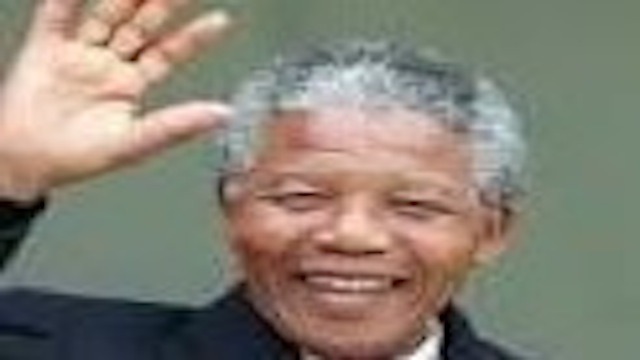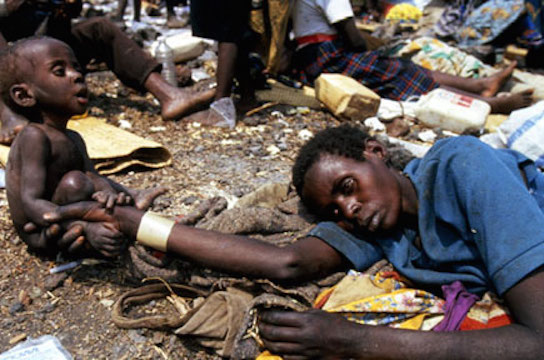INTRODUCTION
The icon of the struggle against oppression, Nelson Rolihlahla Mandela, passed away today December 5, 2013. As the South African President Jacob Zuma said, “Although we knew that this day would come, nothing can diminish our sense of a profound and enduring loss. His tireless struggle for freedom earned him the respect of the world.”
The death of Nelson Mandela should be an occasion, not only to mourn the loss of the person who epitomizes the success of overcoming oppression, but also to reflect on our own struggles against oppression, wherever it is and wherever and whoever we are.
While thinking about Mandela’s struggle against oppression, one question came to my mind: “Is there oppression that is not deliberate or by design?”
The question came to my mind, perhaps because, lately, I read two converging opinions on the nature oppression in Rwanda, coming from leaders from opposing sides: the Rwandan President General Paul Kagame and Dr. Gerald Gahima, one of his current staunch opponents.
For Kagame: Oppression of Hutus is by Default, not by Design
In an interview by Jeffrey Gettleman, the East Africa bureau chief for The New York Times, published in New York Times on September 4, 2013 under the title The Global Elite’s Favorite Strongman, Jeffrey Gettlemen wrote:
“When I asked Kagame about this, he first tried to convince me that Tutsis actually don’t dominate politics or business. When I presented specifics: the health minister, defense minister, foreign minister and finance minister are all Tutsis, along with some of the richest men in the country, he acknowledged that Tutsis might enjoy a few advantages here and there, but this was “by default and not by design.” Many Tutsis like him had lived outside Rwanda, where there were more advantages. When I was openly skeptical, he finally said, “This Hutu and Tutsi thing, if you get lost in it,” he said, getting exasperated, “you get lost in the pettiness of the past of our history, and you end up in a mess.””
So, for General Paul Kagame, most of the Rwandan top government and military positions are occupied by Tutsis. Most of the businesses are owned by Tutsis, and almost anything of value is dominated by Tutsis who represent, based on official statistics, close to 10% of the population, while 85% of the population, the Hutus, remain in abject poverty, can hardly get a position within the government, are excluded from the military, the police, and from owning strategic businesses. For General Paul Kagame, it is by default, not by design.
For Gerarld Gahima, Oppression of Hutus is not a Deliberate Policy
Then, independent journalist Jennifer Fierberg published an interview she had with Gerald Gahima, a former leader of the ruling Rwandan Patriotic Front and Rwandan Attorney General, before he was forced into exile by General Paul Kagame.
In the interview, Gerald Gahima said: “Unfortunately, though, it is evident resources allocation and control of political power aligned. Poverty in Rwanda has an ethnic dimension. There is an imbalance of power toward Tutsi in Rwanda as well as economic inequalities. I do not agree that there is a deliberate policy to impoverish the Hutu people but there is no doubt that Hutu are discriminated against as well as marginalized in political representation. Economic inequalities between rural and urban population are quite glaring. A disproportionate percentage of the urban population is typically Tutsi. Urban dwellers have better access to state provided services and a better quality of life where as rural communities, who are predominantly Hutu, live in abject poverty. Relatives of people in power get differential treatment over the children of peasants in terms of access to employment and business opportunities. This is not unique to Rwanda. It happens in democracies as well. There is a historic precedent of ethnic division of economic factors.”
There are glaring problems with Gerald Gahima’s arguments. First, the arguments surprisingly support General Paul Kagame’s premise of “ oppression by default, not by design”.
For Gerald Gahima, because political power is aligned to Tutsis, then it is normal that riches and spoils go to Tutsis. Since the Tutsis are mostly city dwellers, then they are richer.
Gerarld Gahima later appears to contradict himself: Hutus are systematically discriminated against, but there is no deliberate policy to impoverish the Hutu.
Gahima’s argument begs a question: If Hutus are systematically excluded from all the positions of power, in the government, military, education, businesses, how is not this a deliberate policy of exclusion?
He adds that this is not unique to Rwanda. Granted. It was the same in South Africa’s Apartheid regime, America during slavery, Burundi during the Tutsi reign, and France during the monarchy.
In Apartheid, the Blacks were excluded to Bantoustans, from government positions, businesses, best schools, etc. In Rwanda, Hutus are banned from residing in some areas in the cities, government positions, the military, from receiving grants or scholarship to study in the best schools or abroad. If that is not a deliberate policy, then what would it be called?
Incidentally, Gerald Gahima says that Tutsis were deliberately discriminated against under General Habyarimana’s and Gregory Kayibanda’s regime.
This then raises another question: did Tutsis become city dwellers after the RPF took power, or were they also the richest under the previous Hutu dominated regimes, since they were also mostly city dwellers?
Oppression is Deliberate and by Design
My point here is not to single out Gerarld Gahima, not even expand the already inhumane divide among the Hutu and the Tutsi brothers and sisters. Instead, I would like to encourage everybody fighting oppression, in Rwanda or elsewhere, to free themselves from ethnic or group bias and shackles, and face the reality surrounding oppression.
Oppression is deliberate, regardless of who is the oppressor or the oppressed. I believe that there is no such thing as oppression that is not by design. Oppression can only be based on a deliberate policy. In the pre and post independence Rwanda, any ethnic and political oppression could only be the policy of the ruling elite. Currently, the ruling elite appears to be from the Tutsi minority that is oppressing the Hutu majority and other Tutsis that dare to challenge the ruling elite.
Our concrete Proposition For Ending Oppression in Rwanda
Now, the question remains the following: how can we overcome this oppression, deliberately designed by the ruling minority? By following the example of Nelson Rolihlahla Mandela, after his liberation. Jacob Zuma summarized Mandela’s example very well while announcing the death of the icon: “Let us commit ourselves to strive together — sparing neither strength nor courage — to build a united, non-racial, non-sexist, democratic and prosperous” Rwanda.


















